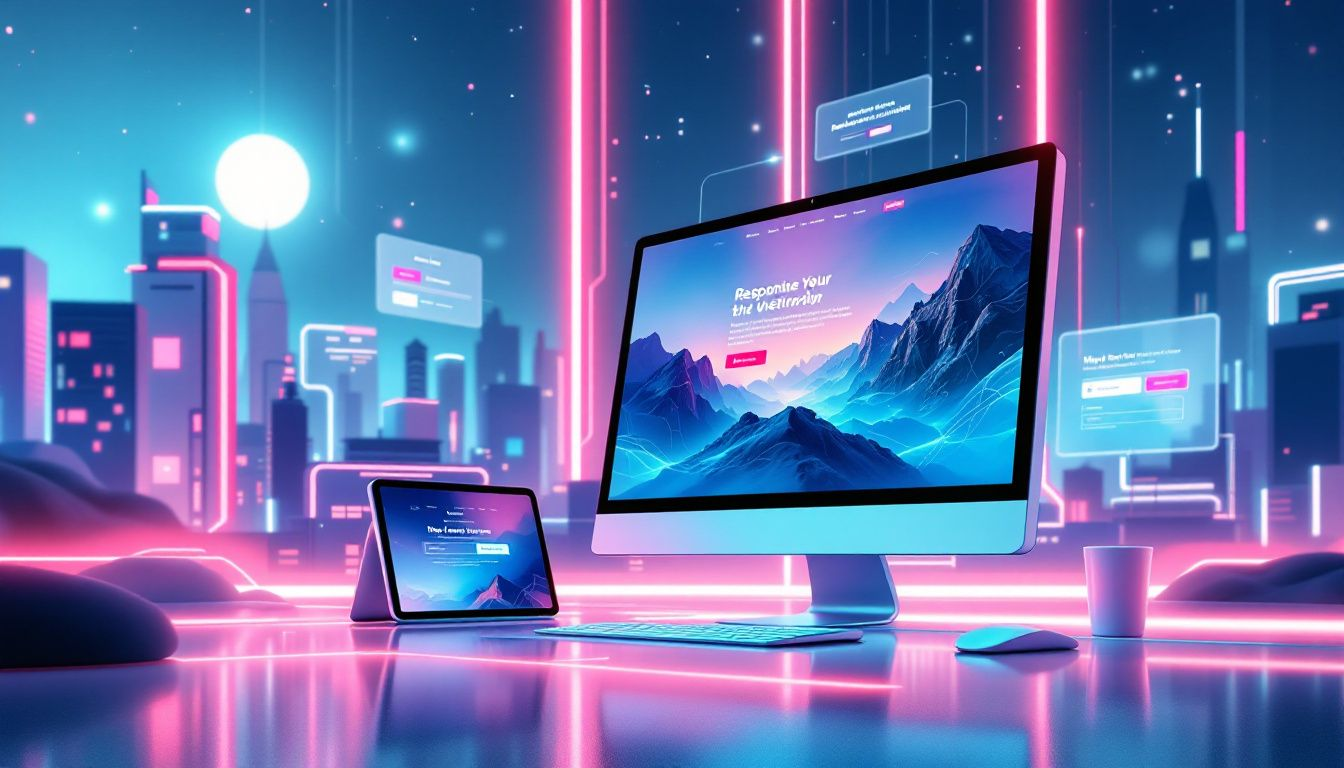PUBLISHED ON: December 17, 2024

Let's Talk
Optimizing images is often overlooked in SEO strategies, but it can make a significant impact on your website’s search rankings and user experience. While Google crawls text content to determine page relevance, properly optimized images can also contribute to improved SEO performance. One crucial aspect of image optimization is reducing the file size, as smaller file sizes lead to faster page load times, which are essential for both user experience and search engine rankings.
In this guide, we’ll explore four proven tips to optimize website images for search engines, helping you enhance page load speeds, improve rankings, and attract more organic traffic.
Understanding Image SEO
In the digital age, images are more than just visual elements; they are powerful tools that can significantly impact your website’s SEO. Image SEO, or the process of optimizing images to improve their visibility and ranking in search engine results pages (SERPs), is a crucial aspect of any comprehensive SEO strategy.What Is Image SEO?
Image SEO involves a series of techniques designed to help search engines understand the content and context of your images. This includes optimizing image file names, alt text, and sizes, as well as using responsive images and structured data. The ultimate goal is to make your images more discoverable in search results, thereby driving more traffic and engagement to your website. Key Benefits of Image SEO: • Improved Visibility and Ranking: Optimized images are more likely to appear in image search results, increasing your website’s visibility. • Increased Traffic and Engagement: High-ranking images can drive significant traffic to your site, enhancing user engagement. • Enhanced User Experience: Faster page loading times and high-quality images contribute to a better user experience. • Improved Accessibility: Properly optimized images are more accessible to users with visual impairments, thanks to descriptive alt text. Best Practices for Image SEO: • Descriptive and Keyword-Rich File Names: Use clear, descriptive filenames that include relevant keywords. For example, instead of “IMG1234.jpg,” use “black-leather-wallet.jpg.” • Optimized Alt Text: Write concise and accurate alt text that describes the image and includes targeted keywords naturally. • Optimized Image Sizes and Formats: Choose the right image format (JPEG, PNG, WebP) and compress images to reduce file sizes without compromising quality. • Responsive Images: Use responsive images that adapt to different screen sizes and devices, ensuring a seamless user experience. • Structured Data: Add structured data to your images to provide additional context and improve their discoverability by search engines. • Image Optimization Tools: Utilize tools like TinyPNG, ImageOptim, or Compressor.io to compress and resize images efficiently. By implementing these best practices, you can enhance your image SEO, making your images more visible in search results and driving more traffic and engagement to your website.Name Your Image File Names Strategically
One of the simplest ways to optimize website images for SEO is by using descriptive filenames. Search engines crawl image filenames just like they analyze on-page text, so including keywords in your image names can boost visibility. The ultimate goal is to make your images more discoverable in search results, thereby driving more traffic and engagement to your website. Additionally, optimizing images for Google Images can significantly enhance visibility and rankings not only in standard search results but also within Google Images.Best Practices for Naming Images:
• Replace generic names like “IMG1234.jpg” with descriptive, keyword-rich filenames, also known as an 'image file name'. • Use a clear structure, such as product-name.jpg or service-name-location.jpg. • Separate words with hyphens (not underscores), as Google treats hyphens as word separators. Example:For a black leather wallet product, name your file black-leather-wallet.jpg instead of a random string like DSC2025.jpg. Pro Tip: Analyze how competitors name their image files and adopt similar phrasing—but avoid duplicating exact keywords to stay original and avoid penalties.2. Optimize Your Image Alt Tags
Alt tags (alternative text) describe the content of an image for search engines, helping them understand the image’s relevance to the page content. Optimizing alt tags improves your SEO and also enhances website accessibility for users who rely on screen readers. Additionally, using an image caption can further aid image SEO by providing context and improving user scanning behavior.How to Write Effective Alt Tags:
• Use clear and concise language that describes the image accurately. • Include targeted keywords naturally, without keyword stuffing. • If the image is for a product, add relevant details like the product name or serial number. Example: For an image of a black leather wallet, the alt tag can be: “Black leather wallet with card slots and zipper compartment for men.” Avoid This: Don’t overload alt tags with excessive keywords. For example: “black wallet leather black wallet men buy wallet online cheap.” Overstuffing keywords can lead to Google penalties and harm your SEO rankings.Use Multiple Angles and High-Quality Image Quality
High-quality images contribute to user experience and align with Google’s priority for valuable, engaging content. Balancing image quality and file size is crucial; using the right image format and compression techniques ensures high image quality while maintaining fast loading times. When showcasing products or services, provide multiple angles to give users a comprehensive view.Why Multiple Angles Matter:
• Builds trust by providing a complete product representation. • Encourages users to stay longer on the page, reducing bounce rates. • Enhances user engagement, which indirectly boosts SEO. Pro Tip: Optimize each image with unique alt tags and filenames to ensure they are indexed correctly by search engines. For instance, use names like: • black-leather-wallet-front.jpg • black-leather-wallet-back.jpg This approach improves relevance for search engines while improving the shopping experience for customers.4. Compress Images for Faster Load Times
Website load time is a critical SEO factor. Research shows that 53% of users abandon a website if it takes longer than 3 seconds to load. Since large images can slow down your site, compressing them without losing quality is key to optimizing performance. Resizing images according to their maximum display dimensions on your website is also crucial, as large image dimensions can hinder site performance. Choose the right image format: Different image formats impact load times and quality. Common formats like JPEG, PNG, and WebP balance image quality and load times, while SVG is ideal for icons and logos.How to Compress Images Effectively:
Use tools like TinyPNG, ImageOptim, or Compressor.io to reduce file sizes. Additionally, create an image sitemap to help search engines discover and index your images more effectively. • Choose the right image format: • JPEG: Best for photos and detailed images. • PNG: Suitable for graphics and images requiring transparency. • WebP: A modern format offering high quality at smaller file sizes. Ideal Image Size: • For website use: Keep images under 100KB. • For banners or hero images: Keep them between 300–500KB without compromising quality. Pro Tip: Use lazy loading to defer the loading of off-screen images until users scroll down the page. This reduces initial load time and enhances user experience.Why Image Optimization Matters for SEO
Optimize images not only improve website performance but also enhance: • User experience: Faster load times and better visuals increase engagement. • Search rankings: Keyword-rich filenames and alt tags improve discoverability on search engines. • Website traffic: Proper optimization can help your images rank in Google Image Search, driving additional traffic. By following these four tips, you ensure that your images contribute to your SEO success while delivering a smooth experience for your visitors.Need Help Optimizing Your Website for SEO?
At Delemon Technology, we specialize in advanced SEO services, including image optimization, on-page SEO, and website performance enhancements. Let our experts help you improve your site’s speed, search rankings, and user experience. 📧 Contact Us: info@delemontechnology.com 🔗 Learn More: Delemon Technology LinkedInReferences
No references available for this blog.




